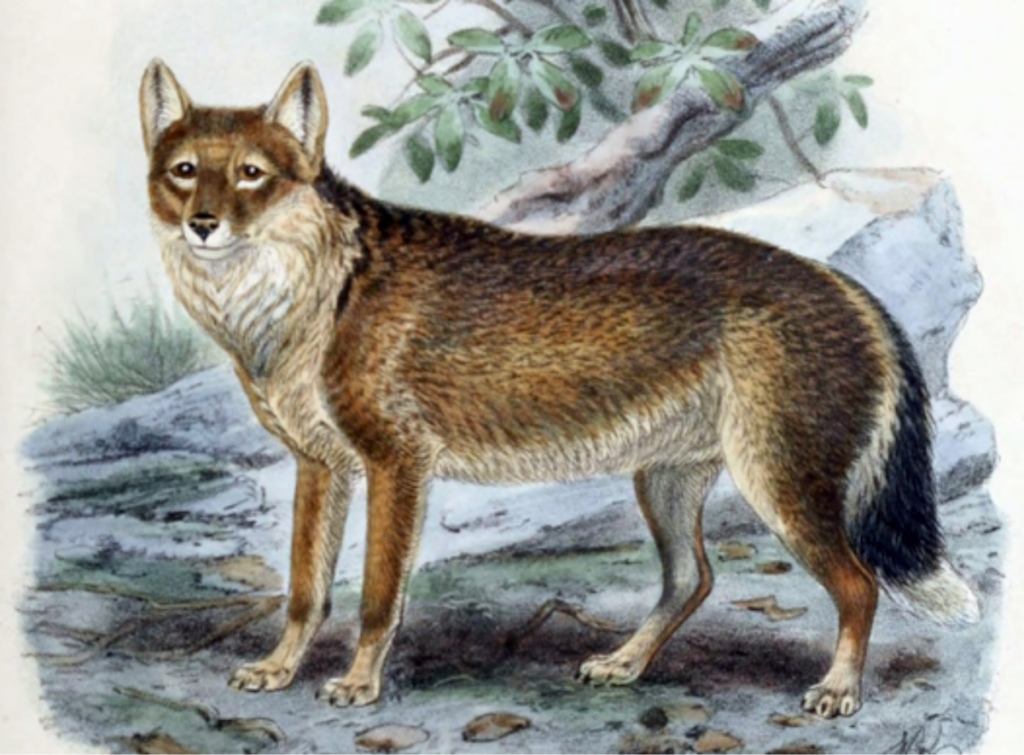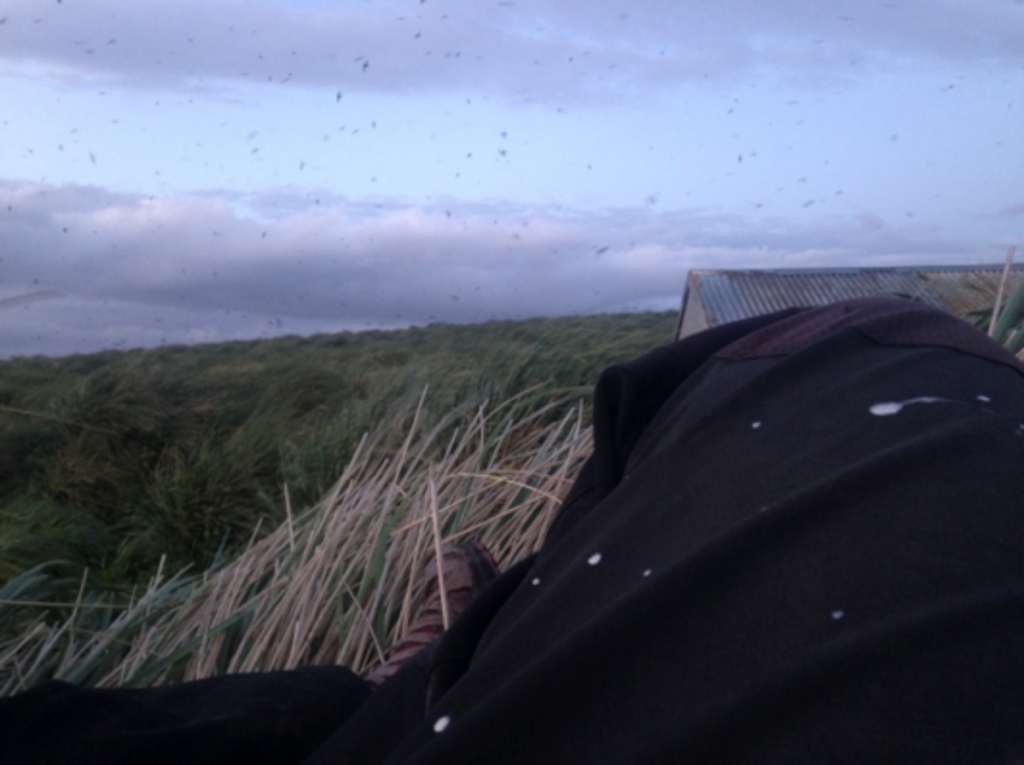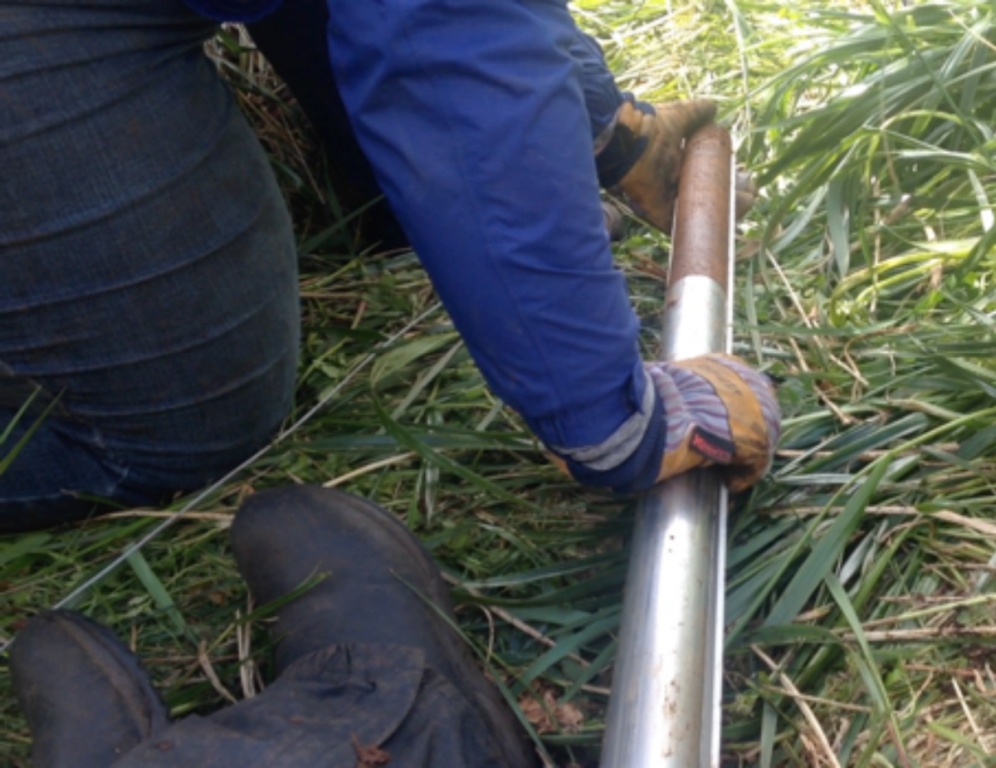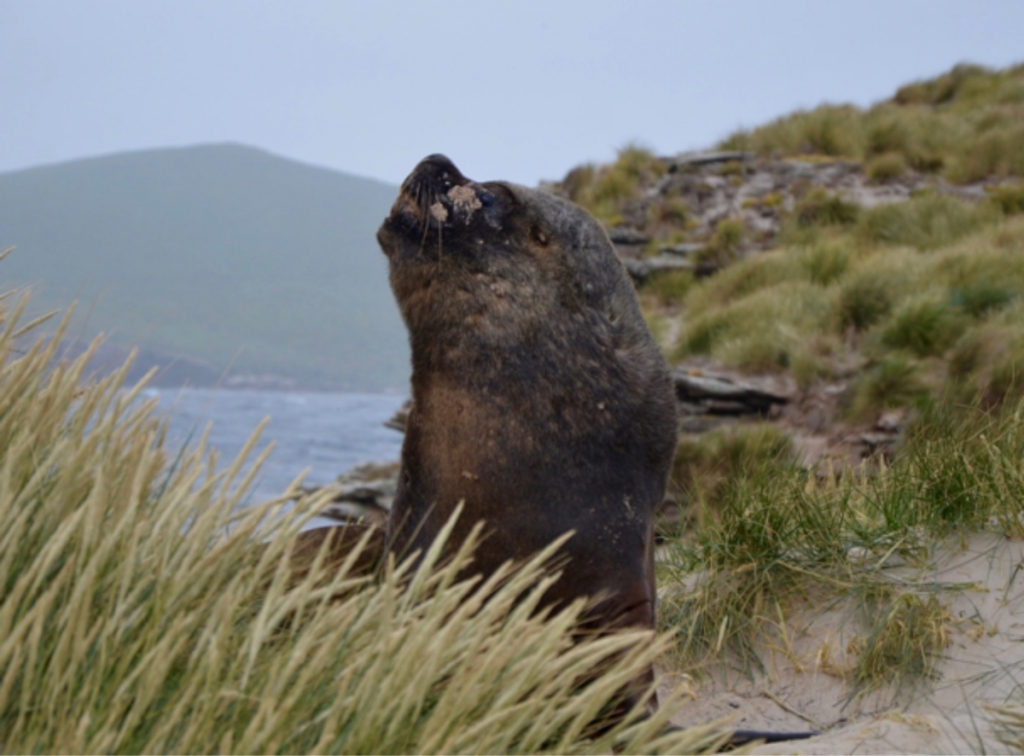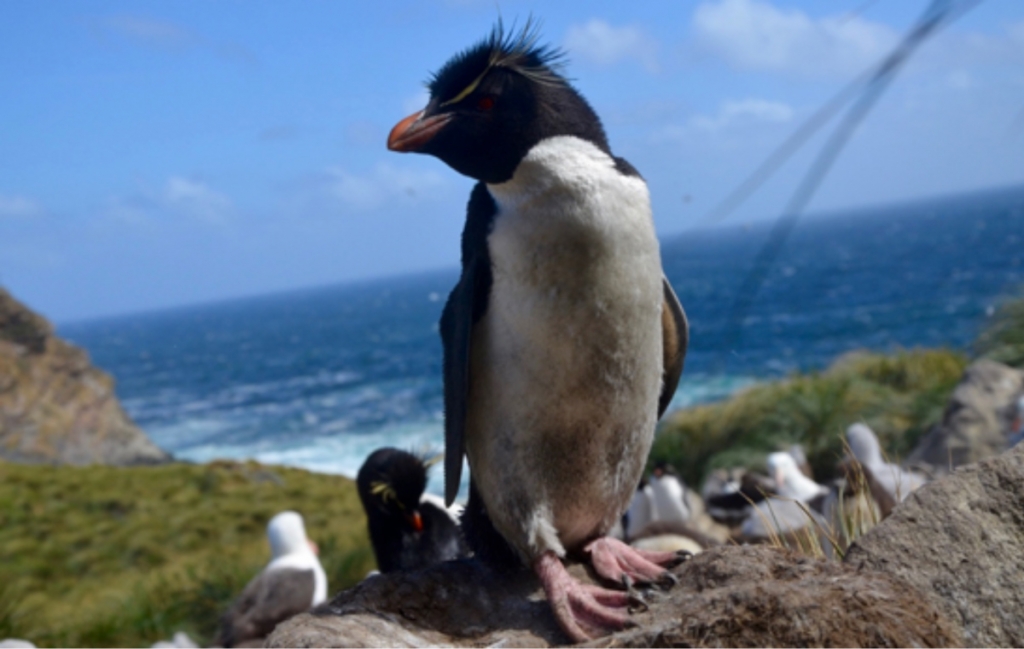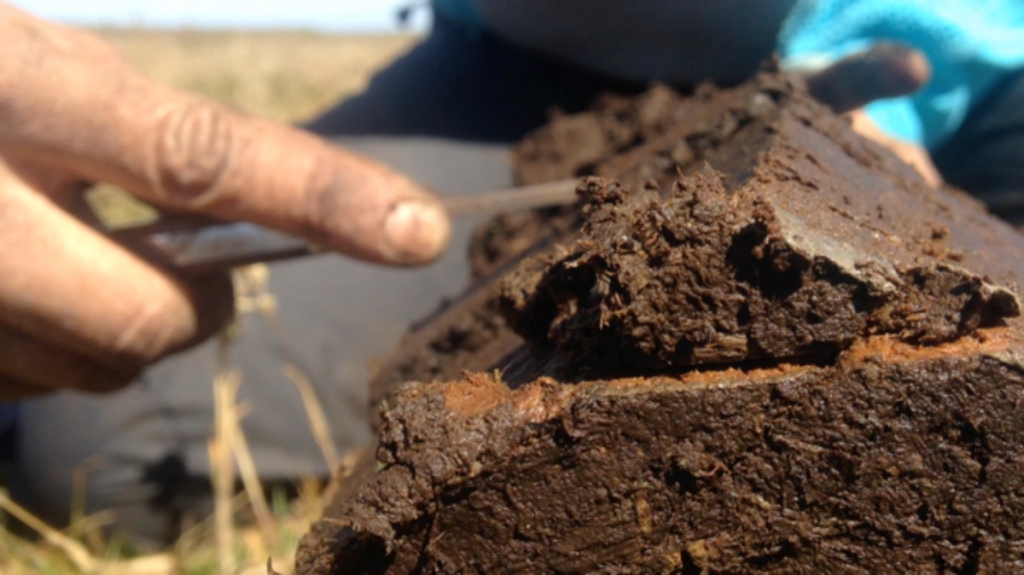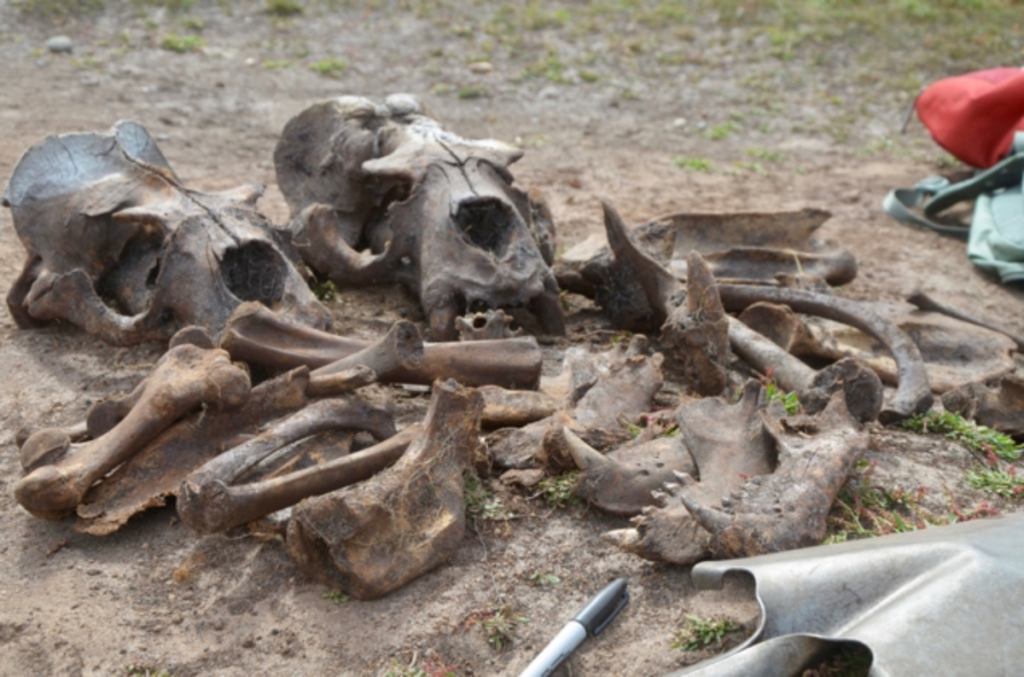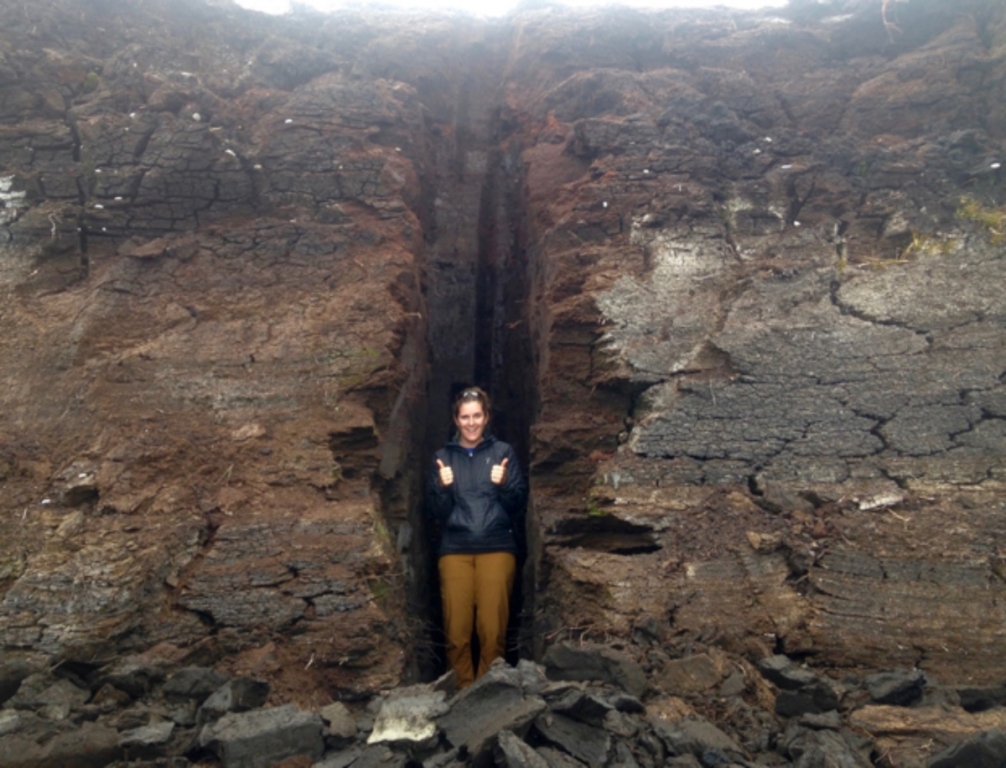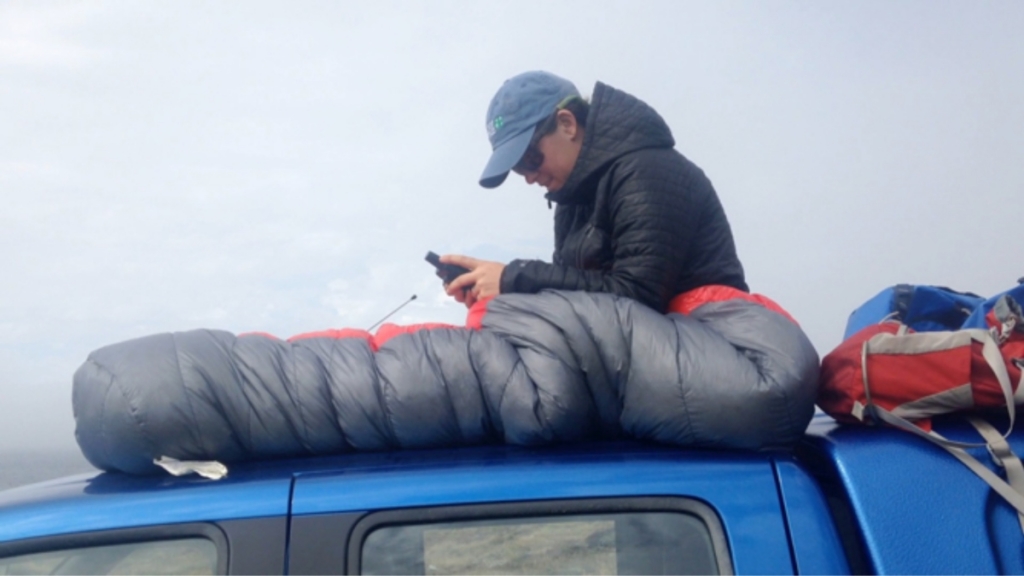
Falkland Islands 2016
Research at 51oS
Churchill Exploration Fund Trip Report
Falkland Islands 2016
January 14 – February 13, 2016
Kit Hamley, Dulcinea Groff, Jacquelyn Gill
When I sat down months ago to begin planning this expedition, the vision I had swirling around my mind was one of perfection. A trip free of mishap or hindrance, and brimming with adventure and scientific success. My training for expeditions to remote locations has of course taught me to plan and be prepared for the worst. Months of preparation often cannot prepare researchers for the trials and tribulations they may encounter in the field, and yet, sometimes against all odds, everything seems to fall into place. Even now as I sit to write this at the close of my month long field excursion to the Falklands, things seem to be in order. In a land known for its fierce and unyielding gale force winds, the air is still; and, though surrounded by looming dark clouds, the sun is still managing to shine. It seems as though today is a perfect reflection of the utterly flawless trip we have encountered so far. Don’t get me wrong, we have dealt with our fair share of minor hiccups, and yet somehow in the end they all seem easily lost amongst the overwhelming success we have experienced.
Before continuing, I should back up and explain the premise of my research in order to put the rest of my trip report into context. The Falkland Islands fox (aka. The Warrah) was the only land mammal present in the Falkland Islands at the time of European arrival in the seventeenth century. The lack of definitive evidence of a pre-European human presence, coupled with the expansive channel separating the islands from mainland South America, raises questions about how and when the extinct, fox arrived in the islands. Perhaps one of the most compelling ideas is that the fox was brought to the islands by pre-European humans via canoe from South America. To date however, no studies have been conducted in order to determine if pre-European humans had ever reached the Falklands. The overarching goal of my research is to determine whether or not there was a pre-European human presence in the Falklands and to assess the potential link between humans and the arrival time of the the Warrah to the islands. This research is the first of its kind to take place in the Falkland Islands and will fill a critical gap in understanding early human, climate, and environmental interactions in this region.
In order to do this, I needed to collect peat cores from sites throughout the islands. Peat is partially decomposed plant material that builds up year after year without breaking down. It forms layers which scientists can use to interpret past climate and land-use change extending back thousands of years. Within this peat record are also layers of charcoal which act as evidence of the past fire history of a region. Several studies have shown that when humans first arrive on an island, fire frequency tends to increase by as much as an order of magnitude. By analyzing each peat core, layer by layer, for charcoal I will be able to detect any change in fire frequency and use that to determine when humans first arrived in the Falklands. In a place where no archaeological sites have ever been discovered, fire history may be our best tool for determining whether or not pre-European humans had ever ventured across the 300-mile gap separating the Falklands from the mainland.
The trip began with three days of travel from Bangor, Maine to Stanley, Falkland Islands. Arriving at each checkpoint along the way with all of our baggage in tow was our first major win of the trip. I think every scientist’s worst nightmare involves not having their gear show up at the start of an expedition, and this time American Airlines and LAN really pulled through for us. With overweight baggage in hand we arrived in Stanley, prepped for a week out in the field and hopped a boat to Kidney Island. Kidney Island is one of the few places in the Falklands that has not ever been grazed or intentionally burned. A dense expanse of Tussac covers the island and nestled amongst the hummocks were unsuspecting sea lions, deep in sleep and unwilling to become cozy with the likes of us. We set out to do vegetation grids for fellow grad student, Dulcinea Groff’s project, whereby we laid out a 5-meter x 5-meter plot, assessed the percent coverage of each species of plant, counted the number of sea bird burrows and collected soil (rinse and repeat x 20). One person would walk ahead, climb a tussac hummock, scout out slumbering pinnipeds, choose a path, and direct the others safely to the next grid location, all the while hollering so as to let our flippered friends know we were in their vicinity. The night was brought in with the awe inspiring site of over 50,000 Sooty Shearwater’s returning to their Tussac burrows after a day out at sea. I was awarded the highest of honors, when I became adorned by fecal matter from above; to get pooped on, is truly every naturalist’s dream.
The following day we rose before the sun and made our way to the Rockhopper colony by hopping from Tussac hummock to Tussac hummock avoiding sea lions in the process. The colony at Kidney is perched high on a slanting rock face that dips into the sea, scarred by claw marks of Rockhopper’s from centuries past. We marveled at their awkward yet adept movements and laughed at the petty nuances of neighborly argument. Reluctantly, we made our way back to the asbestos ridden hut we were calling home, inhaled a breakfast of rehydrated soup, gathered our coring gear and walked 20 meters to our coring site. This was the first true test of our new Livingstone corer and to our great relief she preformed marvelously. We retrieved a 5.5-meter core, full of beautifully preserved Tussac leaves complete with layers of charcoal. This core will act as our baseline for natural fire history in the islands since it has withstood only minor human influence.
Our next stop was Cape Dolphin which is the northernmost point on East Falkland. Here Dulcinea retrieved her rain collector data which she had set up in September and we worked through another series of vegetation grids. Our campsite sat in a little patch of open ground free of Tussac and overlooking a pool where upwards of thirty young sea lions spent their days wrestling, splashing and annoying the adult onlookers. There really is nothing quite like falling asleep to the noise of sea lions growling and rustling in the Tussac nearby. On more than one morning upon unzipping the tent, we found ourselves the subjects of a large male sea-lion’s curious gaze before watching his large rear end retreat into the safety of the Tussac.
Our next stop was Westpoint Island, where we had the pleasure of being involved in a rather exciting event. With only one airstrip, Westpoint has the reputation for being a difficult place to fly in and out of, and we can attest to the validity of that assessment. The Falkland Islands Government Air Service (FIGAS) planes are small bright red propeller planes that can fit only a handful of people. Only two passengers are allowed to fly in or out of Westpoint at any given time, so on this day, it was only me and Dulcinea, and, of course, our pilot. Conditions weren’t perfect, but they were close, so our pilot decided it was worth giving the landing a try. As the island came into view, my heart began to race as it always does when a landing approaches. Knowing full well that I was in good hands, my increased palpitations were the result of excited adrenaline rather than nerves and my grin connected my ears to one another. We dropped down lower but our speed didn’t seem to slow to the landing speed we had previously experienced. We glided over the Tussac fringing the coast, our wheels touched down and for a split second it seemed the anticipation of a difficult landing was all for naught. That was when the engines howled back to life and the wheels left the ground again, leaving the grass behind. Engines screaming, it was clear that our little red plane and pilot were giving it everything they had as the mountains across the harbor crept closer and closer. Just when I really started to question whether or not we would clear the looming features, we were banking hard to the left, engines still working, curling past the final peak and out toward open water. We leveled out, stared wide-eyed at one another with “was that supposed to happen?” looks on our faces, and sat waiting for the pilot to tell us something. After a few minutes, he looked back at us and said calmly, “there is a boat waiting at Carcass Island to take you across to Westpoint”. We both nodded, grinned and gave the thumbs up, happy to be alive and to know that we would in fact make it to the illusive Westpoint Island.
The boat ride was much worse than the plane ride. Before boarding The Condor, some of the locals referred to the water as being “a bit lumpy” which for me, a woman of the land, wasn’t the least bit reassuring. Knowing full well it was our only option however, I boarded the boat in good spirits. In my opinion, “a bit lumpy” was the understatement of the century. We were tossed around below deck like ragdolls for a solid sixty minutes. At first it all seemed like a grand adventure, but that adventure quickly turned an off shade of green and became a game of “Focus on the Horizon, so help me!”. As we neared the island things became less lumpy, as though someone had taken a great iron to the water to smooth it out, and we were ushered into the harbor by a fleet of Rockhopper penguins jumping alongside the boat. A magical way to end a wearisome journey.
We spent the next several days working on vegetation grids, collecting peat columns and exploring the island. The peat here was a particular challenge because we were only ever able to retrieve the top 50 or so centimeters with our corer. After hours of frustration, speculation and contemplation we decided to go about things in a much more primitive way, with a shovel and some elbow grease. We found a tall peat bank from which we extracted a nice column that ended in a thick layer of sand. Despite not reaching marine clay, we have high hopes for this record and the information it will give us about this region of the Falklands. From the peat bank we had the fortune of seeing a rare humpback whale directly off shore. We ended the day with a visit to the Black-browed Albatross and Rockhopper colony at the Devil’s Nose, where waves crashed on the rock cliffs of the shoreline and the sun put on a spectacular show as it fell below the horizon.
On the morning of our departure from Westpoint, we awoke to a thick fog that dampened not only the landscape, but our hope of leaving the island as well. We made our way to the landing strip so that we were ready in case the wind picked up and fog cleared. We watched the pilot maneuver the coastline in order to assess the landing strip and to our relief, he decided the conditions were good for landing. He came in smoothly, loaded us up, and we were off, flying low across the ocean surface to keep safely below the fog.
After a few stops, we arrived at our destination, Bleaker Island. When Charles Darwin visited the Falklands in the early nineteenth century, he wrote about seeing canoes on a beach at Bleaker Island. This account has been corroborated by several landowners in the Falklands, and though no canoe remains are still in existence, this was one of my target locations for collecting a peat core and for digging a few test pits. Bleaker is, well, exactly that, bleak. Unlike neighboring islands to the north and west, there is very little topographic relief on Bleaker. The landscape has been marred by years of intense grazing, so much of the island appears desolate and dull. However, we collected a peat column that painted a picture of a different landscape from times gone by, when Bleaker would have been covered in the lush tussac hummocks that make up so many of the outer lying islands that have remained free from the grasping hands of mankind. Exhausted by the output of digging a 6 x 3 x 8 foot hole into the ground to collect our column, we decided we needed to recharge. What better way to do just that, than to sit on a sandy beach at sunset, watching Gentoo penguins return from a day out at sea? I challenge you, dear reader, to try to come up with something that tops that. We spent the next several days digging test pits and doing vegetation grids and though nothing of archaeological significance was retrieved from test pits, the charcoal record from the peat column should provide insight into the human history of the island.
Next, we headed for New Island. New Island had always been a top priority for me because of it’s location and because of the stone points that have been reportedly found there, but is a tough location to get to for the same reasons West Point is difficult. So when the wind direction changed at the last minute to ideal conditions for landing on New, so did our plans. Our arrival on New Island lacked the excitement our West Point landing boasted, which was ok with us. We were picked up by the land managers and drove on a bumpy track to the settlement forty minutes away, stopping along the way to marvel at the sheer cliff faces that make up the western coastline. The amount of South American driftwood caught in nooks and crannies along the western shore was impressive and a good indicator of the strength and direction of the Falklands Current.
We headed to the north end of the island for several days to a beach where two stone points had been found. We spent a good portion of the day walking around with our heads down looking for flakes, points, bones and anything else of interest. Though no stone points were found, we did come across six large bone piles a short way up from the beach. Though they are most certainly the result of human activity, the trick is finding out who did the killing and the piling and when they did it. The Falklands were subject to the sealing and whaling industry and in many places the records of where these activities took place are lacking. Careful excavation of a one meter by one-meter pit yielded the skulls and bones of at least six large pinnipeds and the bones of numerous penguins. All of the bones were carefully looked at for butcher marks and signs of trauma or alteration and the sediment was sifted to look for stone flakes. Nothing notable was found, but I collected numerous bone samples which I will send off for radiocarbon dating in order to determine if these piles are the result of European sealers or humans who came prior to European arrival. Only time will tell how old the bones are, but until then, three factors give me hope that the piles could be the result of pre-European humans: 1. Of the tens of skulls we found, none had the tell-tale fractures that would occur from bludgeoning or bullets (techniques sealers used), 2. Growing on top of the bone piles were large balsam bogs, which take hundreds of years to fully develop and can be upwards of one thousand years old, and 3. The site of the piles is where two stone points (perhaps three) have reportedly been found. So for now, I must wait for radiocarbon dating to work its magic in order to further unravel what is going on. This will be coupled with the fire history constructed from the lovely 2.5 meter column that we extracted from nearby the settlement.
Perhaps the most National Geographic moment we had was the evening following the bone pile dig. We spent hours huddled down on the beach watching the Gentoo penguins returning home after a day out at sea. This scene was enhanced by the excitement of watching male sea lions patrol the shallow waters near the beach, waiting for the right moment to lay chase to unsuspecting penguins. In the end the only thing that dragged me from the beach was that I could no longer feel my fingers and the sun had long gone down, rendering it difficult to do much of anything.
After spending two extra days at New Island due to inclement wind conditions, the adventurous part of our trip came to an end. Once back in Stanley we realized how incredibly exhausted we were and how much we had yet to accomplish in our remaining week. Our first order of business was to extract a 5-meter core from nearby Surf Bay. This entailed digging yet another monstrous hole. We spent hours gradually making progress toward the center of the earth, and only when I reached marine clay did I realize how much of my research involves the use of a shovel and being ok with getting covered head to toe in smelly, slimy, beautiful peat! We finished off the day with the last of Dulcinea’s vegetation plots and that concluded our field work. Muscles aching, we celebrated with a well earned adult-beverage while watching the tide roll in.
We have spent the last few days organizing and prepping our samples for shipping, looking through museum archives, tying up loose odds and ends, and basking in the glory of 18-hour days. After three and a half weeks of mental and physical output, we are exhausted to the core of our very beings, but are also energized by a renewed love for the spectacular place we get to call our office. As I am writing this, waves are crashing on a rock ledge out at sea, the wind is (surprisingly) not howling, and upland geese are whistling their calls in the distance. Our gentle yearning for home is muffled by the sensory overload the natural beauty of this place boasts. And yet, come Saturday we will find ourselves nestled in amongst the other travelers like sardines in a flying tube of steel hurtling back toward our homeland, feeling like new versions of ourselves and excited to take the next step (in the lab) toward scientific glory. Let’s just hope our samples make it to Maine!
Follow A Researcher: Perhaps one of the most exciting parts of the trip was that I had thousands of school children from across the United States following along with the expedition through the Follow A Researcher program that I have helped develop along with the UMaine Cooperative Extension. Prior to the trip, I visited many classrooms to talk about my research and pre-recorded videos that got released each week of the expedition that highlight the way I have worked through the scientific process for my research. While in the Falklands, I held weekly live Q & A sessions via Twitter and put together short videos from each segment of the trip so that students were able to see what I have been up to and what doing science abroad actually looks like. It has been a blast to connect with classrooms since I have been back to see how they used the program in the classroom. Projects ranged from high school students writing children’s stories and sharing them with younger classrooms, to students designing their own research projects based on what they were learning. It was fantastically successful and really enhanced the way I think about my research. Check out the Follow A Researcher link to watch the recap videos from the trip: http://umaine.edu/4h/youth/follow-a-researcher/
Note (March 3, 2016): The samples made it!
Finally, I wanted to extend a special thank you to Dan and Betty Churchill for making this research possible through the Churchill Exploration Fund.


